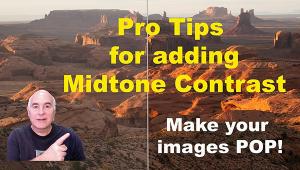I shoot raw (10 MPix camera) and find 4 GB about optimal -- holds about 400 images -- while at the same time avoiding the risk of all images in one basket that would come from 8 or 16 GB cards.
Please comment briefly on your experience with higher capacity cards or any concerns you have about memory cards in general.
- Log in or register to post comments

Love the super fast & super large new cards. In a fast action situation, I don't loose any shots to reload a fresh card, and I don't have to worry about dropping anything out of my camera bag while frantically trying to pull out an unused card and reload. Yea, it's worth the risk.

I had a number of faulty cards which are under warranty but it still doesn't bring back the corrupted photos. Even with recovery software there is allways a risk in placing all your "eggs in one basket". Spreading the risk just makes sense to me!!!

What is a "smaller capacity" card? I have moved to 8 GB cards, and still have two 4 GB cards. The larger cards work well with my 12 MP DSLR, but when the 24.6 MP "full frame" camera becomes available, it may require going to even larger cards to provide a good number of shots (almost exclusively RAW only) per card. But with 16 and 32 GB cards, do these (8 GB) qualify as "smaller?" I have never had a CF card fail, and have heard of such situations on rarely, and usually with "off brand" cards, so that is not a big concern. Also, you may want to re-think, expand or better describe the options in your little survey (see my original comment regarding where an 8 GB card fits in your options).

A small card is as likely to fail as a large one. Indeed, I've have little 64MB (way back in the day) and 512MB cards fail, whereas none of my 2GB cards have bitten the dust yet. The problem is overblown, I feel, and can be ameliorated simply by backing the cards up to another media storage device during the lulls in shooting.

I try to never remove the CF cards from a camera. The connection holes are so small a speck of dust can cause card failure. Therefore, I use the largest, fastest card available at a given time. I've never lost an image(professional photographer).

I have an A-Data 16GB SDHC card that I have been carrying in my pocket for several months now, with no problems. I carry it inside a tiny SanDisk MicroMate card reader and use it as a USB flash drive. On the basis of my experience to date, I wouldn't expect it to be any less reliable than a smaller capacity card.

I used to shoot only on 1GB cards, but it was more to limit my 'shoots' to what would fit on a CD. I've been shooting for a while with 16GB cards and have had no problems or concerns. Just need to separate the photos into storage-size groups now.

You digital photographers seem spoiled and lazy..16 GB cards indeed. Smaller cards are cheap and it takes only a few seconds to swap in my Nikon D200. I dont use anything over 4 GB, and most of my cards are 1 and 2 GB. Sometimes the latest aint the greatest.

The only way to go is spreading the risk. When you're being paid to shoot an event that will never happen again (photojournalism, weddings, etc.) one needs to give themself all the safety advantages practically possible. I shoot 2GB cards on my DX2 in raw mode. That allows 100 shots per card. Enough to cover one phase of an event without needing to change.

4GB cards are the largest I use. I have some 8GB cards, but seldom will I use them. If you have to use a recovery program to recover files it takes a very long time for the program to recover the files from a large capacity card. I've had to do this on a few occasions .

Putting all your eggs in one basket? Not for me. So far, I've had one 512 mb card go corrupt on me. Fortunately I was able to retrive the files before the card went bad. Suppose that was somebody's wedding pics. I'd have lost 50 pics, not 500 or more. Until it gets to the point where the file size get much larger and my 512mb cards only hold a small amount of pictures (I get about 60 RAW files on 1 card) I'll stick with the smaller cards. And by the way, just try to buy a card today smaller than 1GB.

I have the perfect back-up system for my travel photojournalism. It's called a wife. What I miss with my Nikon D80 she nails with her Canon 40D. We both use 4-gig cards, because anything can fail, and they take 5 seconds to change. So get 4-gigs and a spouse!

This is a developing area of interest for me. For now I shoot with 2GB SD cards. I would prever to spread the risk and would not consider a higher capacity card. Additionally, the larger capacity cards really download slowly in my HP computer though it is only a year or so old. In the film days, I would send rolls of my important shots in for processing on different days so as not to lose them all at the same time. Nothing has really changed in terms of risk.

































